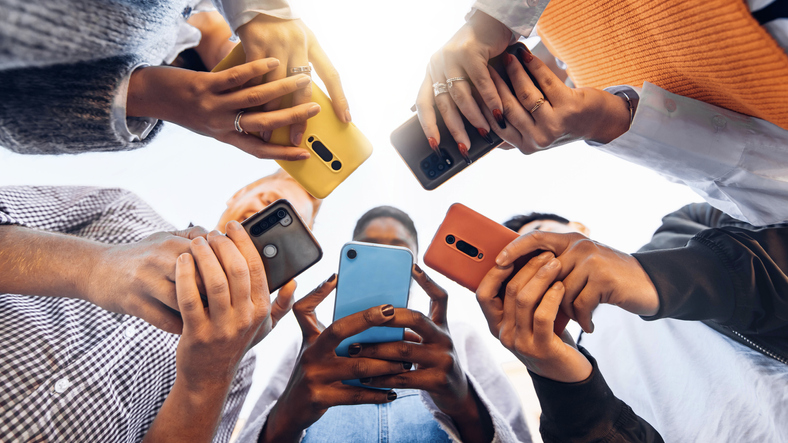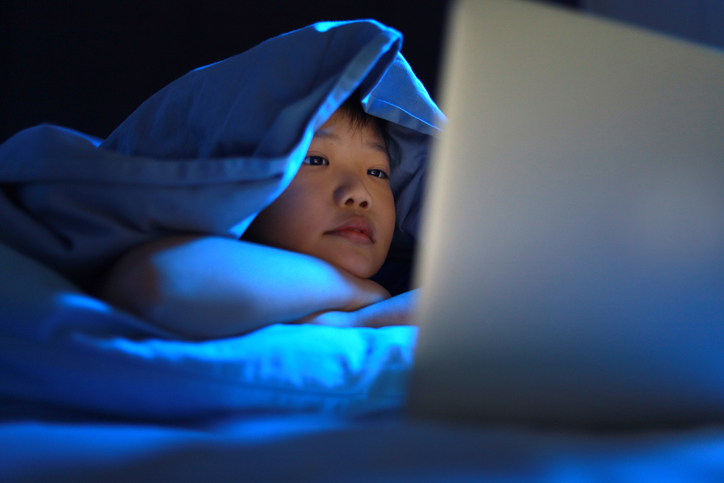Youth & Technology: How Social Media Affects the Mental Health of Children with ADHD
 Let’s face it: screens are a defining feature in the lives of both children and adolescents. Whether it’s social media apps (i.e. Instagram, TikTok, Facebook, Twitter, Snapchat or Discord), YouTube videos, gaming, television, texting, listening to music or buying material goods, kids today are extremely adept at and focused on their phones, computers and tablets. But how can the constant desire to check social media affect our mental health? Especially for those with ADHD or neurodivergent needs. Well, for starters it’s important to understand that virtual reality is their reality. There’s often no real difference between what happens online and in real life for those with ADHD. One question I’m often asked is “How do screens affect the development and behavior of our youngsters, especially those with ADHD?” Great question, let’s talk about it. A new study by Jason M. Nagata, Jonathan Chu and authors on (July 26, 2022) examined whether total screen time per day affected the onset of oppositional defiant and conduct disorders (ODD and CD) in children between the ages of nine and eleven. They found some really interesting results. First, the average amount of screen time per day was four hours. Secondly, for each hour of screen time or social media, the frequency of new onset disruptive behaviors included lying and sneaking. The strongest association was between social media and conduct disorder, with one hour on social media linked to a 62% higher rate of occurrence. Now, what does this research mean for kids and teens with ADHD who already have higher rates of ODD (30-50% overall) and CD (25% in children and 45% in teens)? and How can parents manage the intrusions of social media and screens in their families to avoid the development of disruptive behavioral conditions while fostering better emotional regulation and teach impulse control?
Let’s face it: screens are a defining feature in the lives of both children and adolescents. Whether it’s social media apps (i.e. Instagram, TikTok, Facebook, Twitter, Snapchat or Discord), YouTube videos, gaming, television, texting, listening to music or buying material goods, kids today are extremely adept at and focused on their phones, computers and tablets. But how can the constant desire to check social media affect our mental health? Especially for those with ADHD or neurodivergent needs. Well, for starters it’s important to understand that virtual reality is their reality. There’s often no real difference between what happens online and in real life for those with ADHD. One question I’m often asked is “How do screens affect the development and behavior of our youngsters, especially those with ADHD?” Great question, let’s talk about it. A new study by Jason M. Nagata, Jonathan Chu and authors on (July 26, 2022) examined whether total screen time per day affected the onset of oppositional defiant and conduct disorders (ODD and CD) in children between the ages of nine and eleven. They found some really interesting results. First, the average amount of screen time per day was four hours. Secondly, for each hour of screen time or social media, the frequency of new onset disruptive behaviors included lying and sneaking. The strongest association was between social media and conduct disorder, with one hour on social media linked to a 62% higher rate of occurrence. Now, what does this research mean for kids and teens with ADHD who already have higher rates of ODD (30-50% overall) and CD (25% in children and 45% in teens)? and How can parents manage the intrusions of social media and screens in their families to avoid the development of disruptive behavioral conditions while fostering better emotional regulation and teach impulse control?
SUBSCRIBE TO MY NEWSLETTER
How Parents Can Easily Manage Digital Media Time
1. Guide them, don’t threaten
 What your child or teen needs most is guidance from you–not threats or punishments for managing how they interact with the digital world. Neither punishing nor separating tweens and teens from their phones will produce the results you are looking for because these disciplinary acts don’t teach any skills. Plus, separating kids from their phones can actually result in social isolation and alienation from peers which nobody wants either. So what is a concerned parent or caregiver to do when they are only trying to help? Keep reading for more tips.
What your child or teen needs most is guidance from you–not threats or punishments for managing how they interact with the digital world. Neither punishing nor separating tweens and teens from their phones will produce the results you are looking for because these disciplinary acts don’t teach any skills. Plus, separating kids from their phones can actually result in social isolation and alienation from peers which nobody wants either. So what is a concerned parent or caregiver to do when they are only trying to help? Keep reading for more tips.
2. Recall the ADHD fundamentals
Start by recalling the basic biology and fundamental characteristics of ADHD. Kids with ADHD often struggle with impulse control, emotional regulation and following directions due to a delay in the prefrontal cortex maturity and challenge with several executive functioning skills simultaneously. While neurodivergent kids and teenagers (those with ADHD, LD, 2E and ASD) may struggle to concentrate on or complete tasks they dislike, they can perform very well and focus for a long time on activities they like. Such as social media and video games. This differential attention is a core aspect of ADHD and it’s related to naturally lower amounts of the neurotransmitter dopamine. Pings, colors and quick, easily achievable levels of achievement seen in online games, Snapchat, or other apps activate novelty detectors in the dopamine pathways in our brains. These pathways manage attention, pleasure and addiction. It’s easier for people with ADHD to become totally engaged in their digital activities because the technology generates the dopamine–pleasure, satisfaction and reward systems–their brains lack. It’s much tougher to stop high-dopamine pursuits because nothing else seems as fun, captivating or compelling. Who wants to stop gaming or scrolling through Instagram to set the table for dinner and then eat the meal? Probably not your youngster with ADHD.
3. Watch out for social comparisons
 Some of the most serious consequences of the digital world are social comparisons. Social media and the digital world frequently lead kids to create unrealistic personal expectations that can be inspiring or destructive to their mental health. While it’s a natural part of teen identity formation to compare yourself to others and look for similarities and contrasts, often kids with ADHD who already feel a greater sense of insecurity believe they just don’t measure up. Research has found that adolescents who already suffer from low self-esteem or mild depression are more likely to make frequent social media comparisons that negatively affect their well-being and mental health. Avoid that by implementing a balanced media diet.
Some of the most serious consequences of the digital world are social comparisons. Social media and the digital world frequently lead kids to create unrealistic personal expectations that can be inspiring or destructive to their mental health. While it’s a natural part of teen identity formation to compare yourself to others and look for similarities and contrasts, often kids with ADHD who already feel a greater sense of insecurity believe they just don’t measure up. Research has found that adolescents who already suffer from low self-esteem or mild depression are more likely to make frequent social media comparisons that negatively affect their well-being and mental health. Avoid that by implementing a balanced media diet.
How to Implement a Balanced Media Plan + The 5 C’s
 Creating an effective and balanced media diet won’t be easy. You will likely encounter pushback, threats, negotiations and pleading. But it will be worth it.
Creating an effective and balanced media diet won’t be easy. You will likely encounter pushback, threats, negotiations and pleading. But it will be worth it.
Try Using Dr. Sharon Saline’s 5 C’s
1. self-Control: Monitor your own triggers and take a time-apart when necessary to regroup. 2. Compassion: Remember how hard it is for your child biologically to stop using technology and incorporate some empathy. 3. Collaboration: Work with them for solutions instead of forcing rules on them so they have buy-in. 4. Consistency: Aim for regularity in whatever program you create, not perfection. Explain exceptions when they occur. 5. Celebration: Notice signs of cooperation, make eye contact and verbally acknowledge what you’ve observed to build on the wins. Remember, meet kids where they are, not where you think they should be. Have sympathy for yourself too. It’s easier to accept your child and their challenges when you can do this personally. Always feel free to reach out to me at info@drsharonsaline.com. 
Follow me on social media: YouTube, Facebook, Twitter, Instagram.
Coaching/Counseling | Presentation/Workshops | Podcast Interviews | Subscribe to our newsletter
Sign-up for my newsletter today and receive 10% off!
